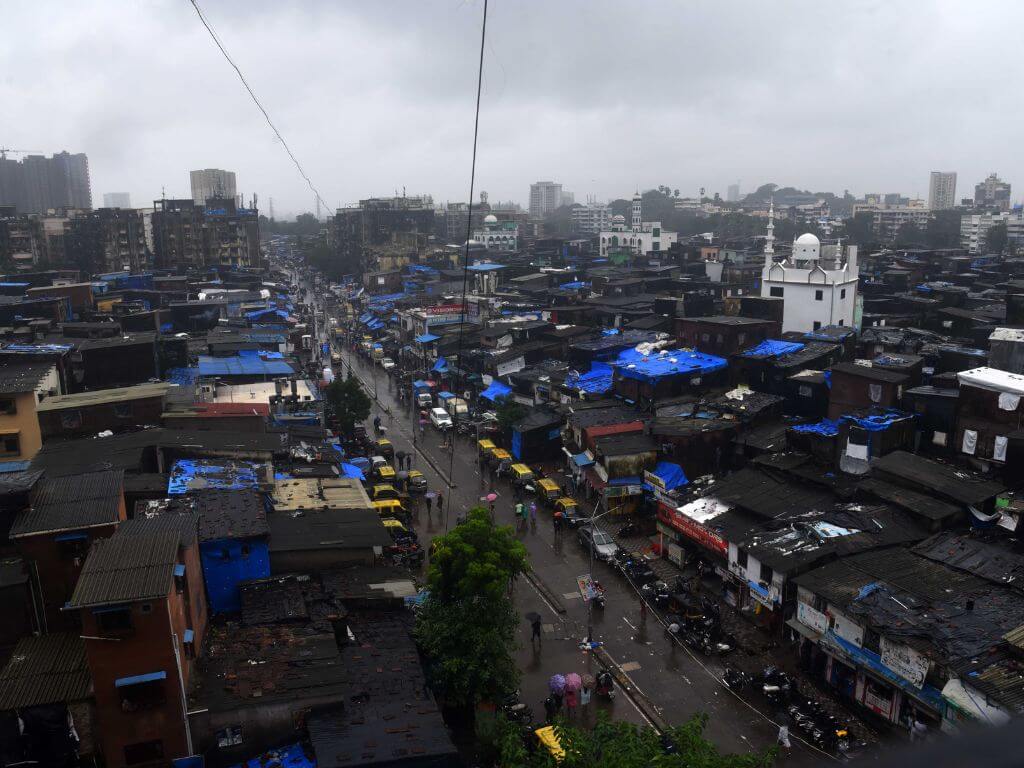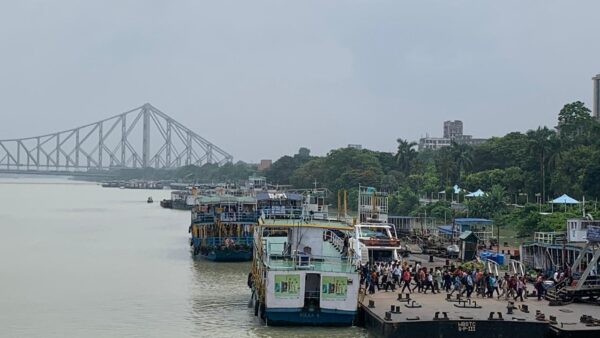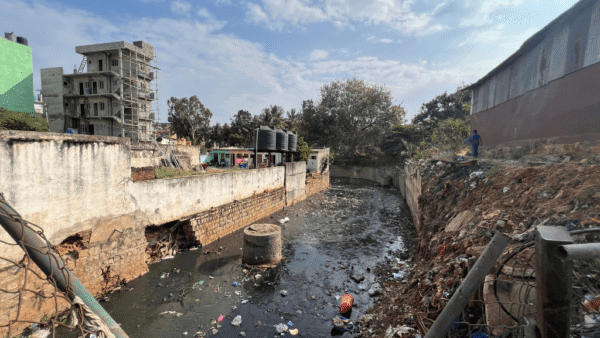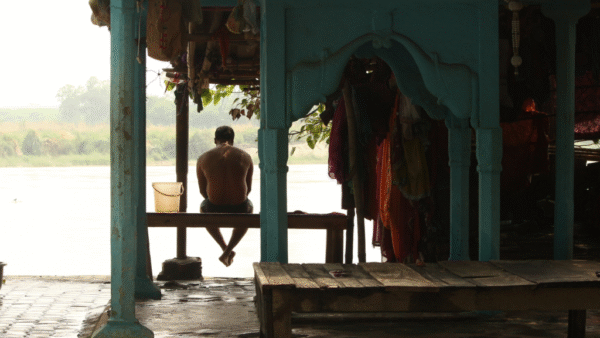There is much at stake in Dharavi. Millions of little dingy homes along open gutters, small and medium businesses that flourish despite the filth, community networks that foster support as well as strife, schools that double up as dance and rap practice venues, women’s work from home that fetches them a few precious thousands every month, mezzanine floors and khopchas that people added to their single room homes, precious space between rows of houses where the ubiquitous water drums are parked along with bicycles, and so on.
There’s more as the redevelopment story unfolds – people’s aspirations for better homes, their hopes for improved standard of living, their fears that their lives will not settle back into familiar and comfortable patterns in the new place, their ideas of what redevelopment should look like for them and their children, their almost regretful nostalgia at all that they leave behind, and so on.
For Mumbai, for the state government and the developer, there’s something critical at stake – land. All 595 acres and more if you add the transit accommodation area, in the middle of Mumbai, abutting the super-expensive Bandra-Kurla Complex. So much land, contiguous land, in a city that measures its value in gold. As the redevelopment machine works to unlock the value of this land, Dharavi has begun to live what academics once called contested urbanism.
The tenement rooms, factories, and workshops of the potters, tanners, embroidery workers, clay artisans and others weigh in the information – often conflicting and contradictory – coming in from different sources about the proposed redevelopment. Old-timers remember the 1980s and 2000s when the promise of better homes was a non-starter due to complications, lack of political will and so on. Adani Realty aims to transform the slum “into a modern city hub” in 17 years.
Why the redevelopment is public loss and private gain was addressed in a recent editorial in Question of Cities.This photo essay takes you through the gullies of Dharavi to meet people who make the place, and understand how they respond to the redevelopment plan. A house for house was not their concern, that’s a given. For many, it was about their work spaces. The multifarious businesses together have “an annual turnover of $650 million to $1 billion, and directly employ more than 2,50,000 people,” according to estimates. Dharavi is sometimes called the heart of Mumbai, say researchers Serena Alcamo, Daniela Bosco, and Valeria Federighi who noted that “Eighty percent of the population is employed within the settlement, with as much as 40 percent self-employed” in their paper Incremental open spaces: The Case of Dharavi, India.[1]
Testimony of people’s struggles
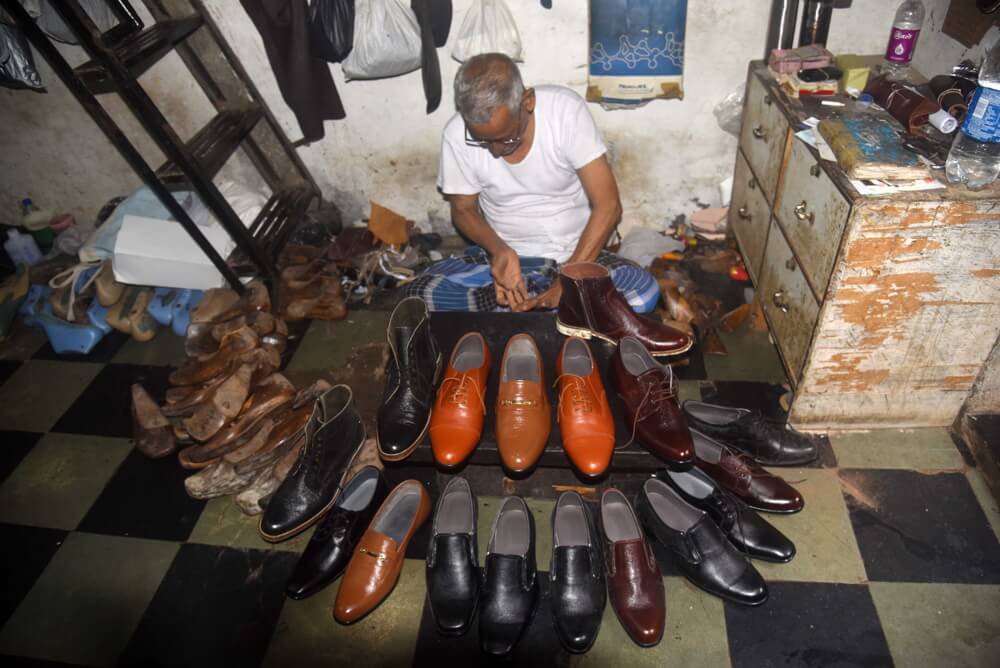
At 72, Masum Ali Sheikh is still hard at work. Opening a shoe-making shop back in 1974 gave him a decent livelihood besides a home. His ground-plus-one structure with the shop below conforms to Dharavi’s standard living-working space. A migrant from Uttar Pradesh in 1961, he first worked in a bakery in Nagpada and then learned to make and mend shoes. When he came to Dharavi, there was water and gutters everywhere. “Things changed over the years and Dharavi became crowded.” His shop is neatly and impeccably stacked with shoes. Sheikh earns between Rs 20,000 and Rs 30,000 a month after paying his four employees. “Almost 80 percent of Mumbai Police personnel buy shoes from me which cost from Rs 400 to Rs 750 a pair, which is very reasonable,” he says, holding a pair of shoes.
“We have not been told anything about redevelopment. My only demand is to give me a place where I can do my business and continue to earn my livelihood,” says Sheikh, who educated his two daughters and hosted their weddings. He is conscious that four other families depend on his work too. Sheikh is not looking for additional benefits from the developer or the government, only that his workspace is compensated.
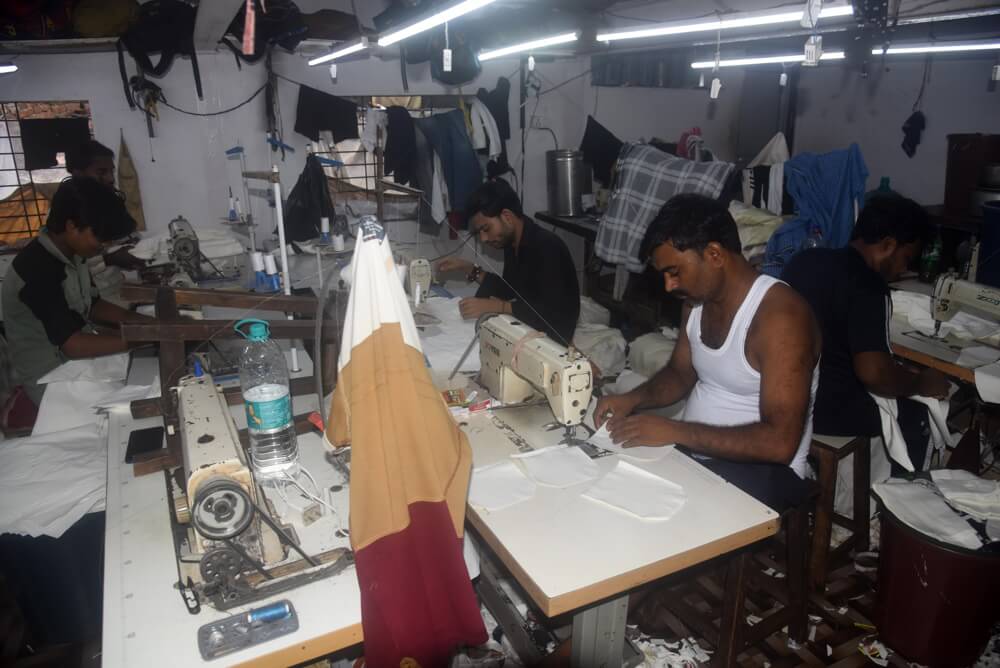
Dharavi is known for its garment units which supply to many dealers and shops with better addresses. Mustaq Ahmed Ansari, 66, single-handedly set up his garment workshop in Gopinath Colony, Dharavi, in 1982. The ground-plus-one structure now employs 25 workers. Being in Mumbai, though in Dharavi, changed the family’s life because he could educate his children. “I have three children, one of whom is a doctor and set up his dispensary here eight years ago. The other two help me,” he says, “I have been here for 35 years, I have settled in this place.”
The uncertainty about redevelopment hangs heavy. “I am happy about the redevelopment but if I have to set up my shop somewhere else, then I would have to make changes accordingly. So we need to know,” he adds foregrounding the anxiety most people here share.
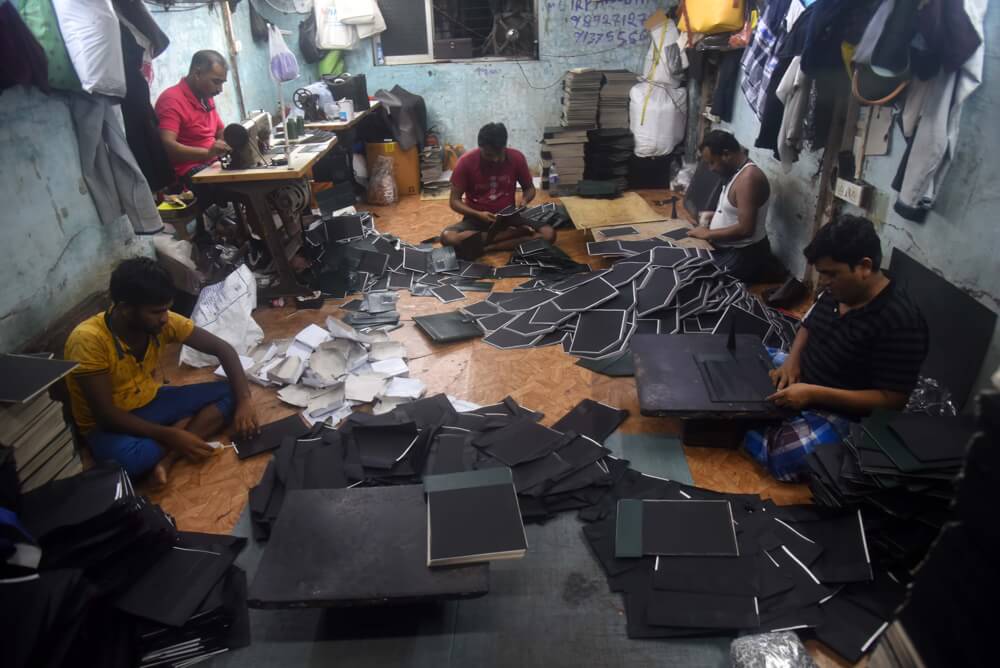
Imran Mukeri, 40, is busy making a rexine leather folder in a small room filled with leather sheets. The smell of raw leather is everywhere. When he started living in Dharavi in 1998, he faced problems – there was not enough drinking water or electricity. “We used to buy water. There were no roads leading to this part of the slum,” he remembers.
Originally from Bihar, Mukeri and his brothers work with the aim of giving their children a good education. “We mostly make leather bags but during monsoon, we make rexine products,” says 38-year-old Mukeri. Their earning of Rs40,000 to Rs 50,000 a month pulls them through. Work slows down during monsoon as the leather sheets rot if they get wet. “For those three to four months, buying and selling is slow. This affects our livelihood and our business,” says Mukeri, whose four children study in Sadhana Vidyalaya, Sion. He lives with his three brothers, who also work in the bag making unit.
“I have heard about the redevelopment of Dharavi. Our only hope is we get a good place to earn our livelihood,” he says.
Women hope for a better life
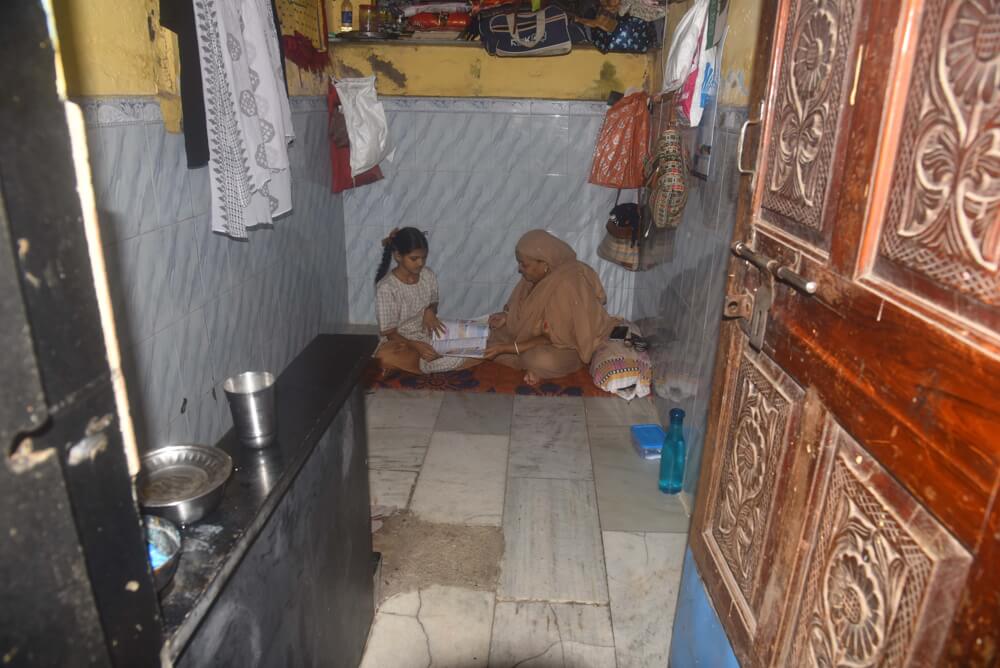
Women in Dharavi appear to favour redevelopment. Across its many nagars and bastis, women are the ones who struggle to collect water for household needs. The lack of toilets within living spaces, non-existence of amenities like common space and parks affect them the most.
Amina Abdul Rashid Khan, 60, is the unit president of Janwadi Mahila Sanghatana, a women’s organisation. She has been with it for 30 years. “I grew up in Dharavi and got married here. I live with my five children and many grandchildren,” says Khan, “Dharavi lacks basic amenities. The small lanes are waterlogged during rains. The house is so small that we cannot even keep a stove inside. We have had no help from the government. How are we going to live like this?” Khan wants redevelopment in Dharavi but has concerns. “Our families have grown bigger. If we get a small house of 350 square feet after redevelopment, how will a big family like ours live in it?”
Tasrifun Nesha, 62, has a long list of problems she has been facing in Dharavi. “We face the biggest problem of going to the toilet. The lane outside is so narrow that we can hardly go out. We do not get fresh air and water. Houses are so small that it becomes difficult for the children to study. We can’t even cook inside; it gets very hot,” she complains. “We have been hearing about redevelopment for years. We want a house with all amenities,” she says hopefully.
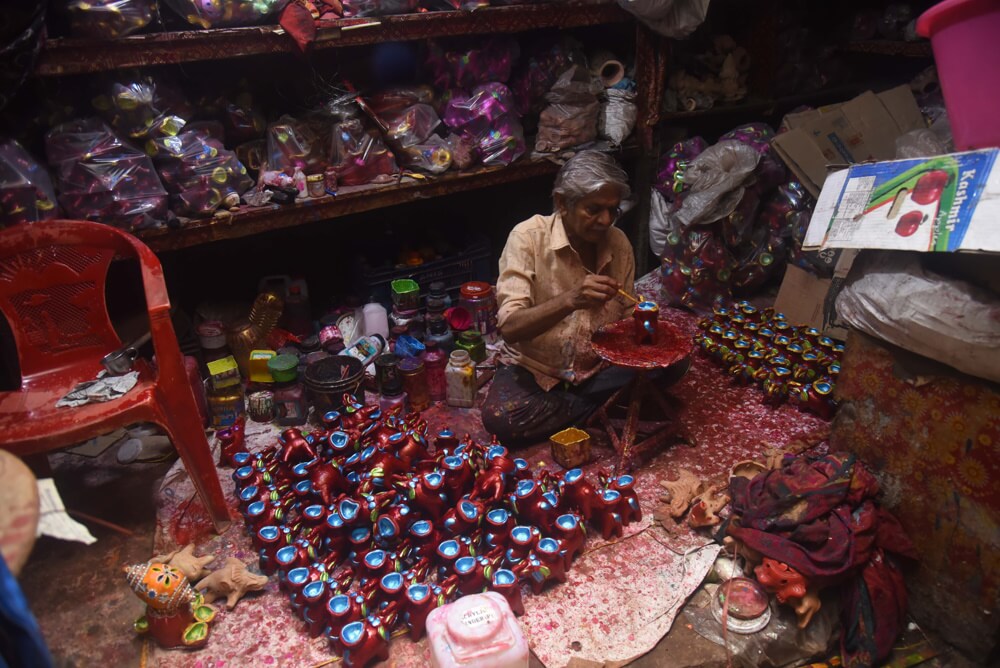
Jainti Deyoji Chitida, 48, lives and works at Dharavi’s Kumbharwada. With the festival season in swing, this is a busy time for him. Surrounded with earthen pots, he meticulously paints each one to meet the demand for the upcoming festivals.
“It’s good if we get a bigger house. What more can we demand? If we stay together and do our business, this is more than enough. If we all stay far from each other, business will suffer. We depend on each other for various things,” says Chitida.
Art-culture put Dharavi on global map
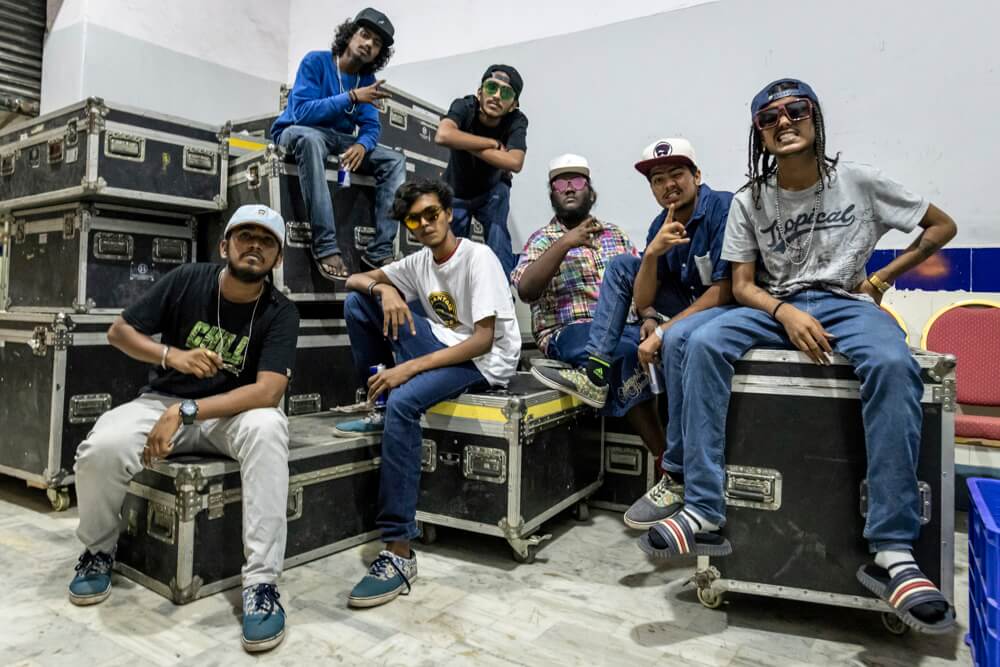
“Dharavi is a hub of hip-hop,” says David Klyton proudly. A member of multilingual rap group, 7Bantai’Z, 22-year-old Klyton grew up here. The group of seven boys are well-known names in the music circle. “We learnt hip-hop on our own,” he says.
“Dharavi has always been perceived as a poor area. Our parents ensured we had wholesome meals and good education. But we were looked down upon if we said we were from Dharavi,” Klyton says. Music saved some youth too from “gangstergiri” and “bhaigiri” they thought was cool. “We would have strayed to the wrong path. But hip-hop changed our lives,” he says. The group is leaving for a show in Chennai. Their music and presence has made people see Dharavi more positively; venues that refused them entry now invite them to perform.
“We haven’t got the briefing about the redevelopment. We don’t know if people would be asked to shift. We would root for equitable rights for all. Many people are struggling here, if they get houses with amenities, why not? But we wish to live in Dharavi itself though I would love a flat,” Klyton says.
Dharavi has been the location for Bollywood and Hollywood films. Although the 2008 film, Slumdog Millionaire made Dharavi popular and Bollywood had many takes on it including Gully Boy, Tamil film Kaala showcased the ground reality. Set here, Kaala (2018) highlighted Dharavi’s history, people, their lives and issues. Kalpana Sharma, author of Rediscovering Dharavi, wrote about the film:[2] “Ranjith also reminds us that Dharavi was literally ‘made’ by the people who live there. Therefore, the repeated assertion by Rajnikanth’s character that Dharavi belongs to them. It was a swamp, a place where there could be no human settlement. Yet over time, the very people who came to live there filled it up. The side of present-day Dharavi touching Sion and the one next to Mahim were separated by that swamp. Today, you would not be able to tell.”
The 1991 film Dharavi directed by Sudhir Mishra showed the slum through a taxi driver’s dream, struggles and despair. The narrative of the poor and the marginalised has hardly changed over the years, but Dharavi is now less seen as a place of utter poverty and hopelessness, more as prime land locked in a slum sprawl whose values can be unlocked through redevelopment.
Tenants too want a share
Around 25,000 people live in rented homes in Dharavi, informs Nitin Popat Divekar, president of Dharavi Rental Association and a resident of Khabha Dev Nagar. “Dharavi was not what you see now. We didn’t get loans if we said we were from Dharavi; this place is a treasure for builders. To make this Dharavi, people have struggled hard,” he echoes Sharma’s observation. “People termed this place dirty and no one wanted to live here, locals turned it into a gold mine but they are being given only assurances from the government,” he adds.
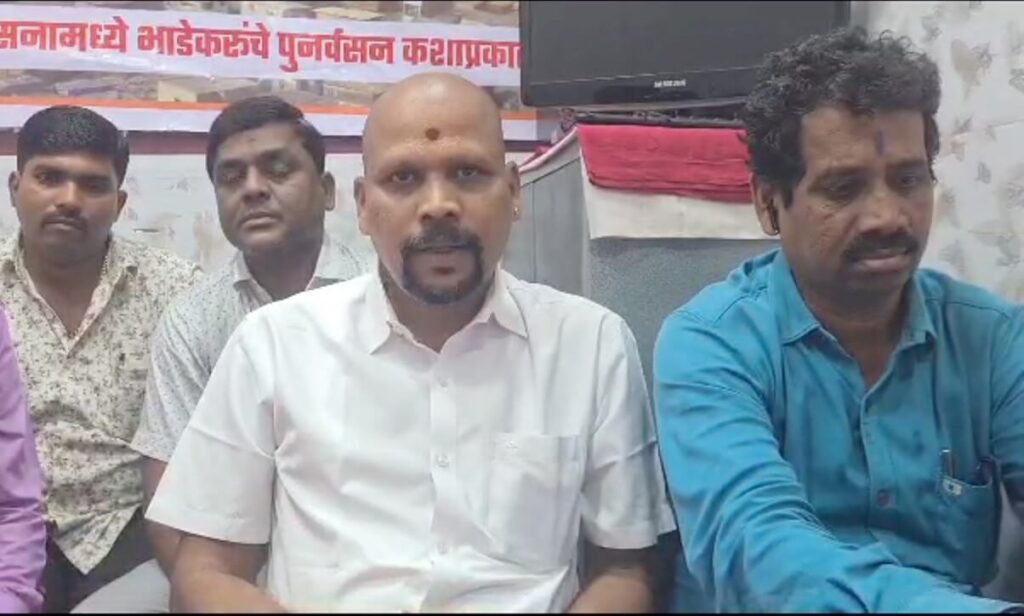
He is firm that Dharavi should be redeveloped only by consulting people. “Those of us who live here in rented houses have formed the Dharavi Rental Association. We also should be taken into confidence too. Many people live here on rent because of the businesses Dharavi has.” His concerns are: How will they be rehabilitated, what will happen to Dharavi’s Koliwada, Kumbharwada and garment businesses? He demands that people are informed about rehabilitation and surveys conducted on those living on rent too. Tenants should get houses – if not free, then on rent.
Shakeel Khan, 49, is worried as there is no clarity on those living in rented houses though tenants played a role in turning Dharavi into a commercial hub. “We pay rent and taxes. What will happen to us in the redevelopment? Even if I get a house, where will I accommodate my garment unit,” asks Khan, who has been living in Kawle chawl, Dharavi, since 1984, with his garment unit on the first floor. He remembers that Dharavi used to be deserted and people were scared to come. “Now, people come and go at 2am. There are businesses functioning throughout the night. Dharavi ek sone ki chidiya hai.”
Save Dharavi, say some
Not everyone is happy about the redevelopment. Residents and leaders of various political parties held a protest against Adani on August 9 with their list of 17 demands which include the conservation of Maharashtra Nature Park, protection of rights of all commercial units and cottage industries as well as shops, allocation of corpus fund to the existing housing societies, rehabilitation of families on rent.[3]
Aam Aadmi Party (AAP) leader Ruben Mascarenhas said the last survey in Dharavi was in 2008 and had surveyed around 58,000 structures – 12,000 are commercial and 46,000 are residential – but a new thorough survey would reveal the reality. “There are around 1 lakh structures in Dharavi besides manufacturing units, and outlets of the local economy. We have been demanding a fresh survey and everybody needs to be accommodated.”
Objecting to the cut-off date of January 1, 2000, which would qualify those settled on or before that date to compensatory houses, advocate Sandeep Katke who is the coordinator for AAP for its Dharavi Bachao Andolan, said that the cut-off date should be the last day of the resurvey; also, this cut-off is unfair because in Slum Rehabilitation Projects, the cut-off is 2011. “Nearly 10,00,00,000 (ten crore) square feet FSI will be generated out of the Dharavi Redevelopment Project. As per the proposal submitted by Adani Realty, only 4 crore sq ft will be given to Dharavi residents while the rest will be saleable component,” he said asserting that this was not fair.
Dharavi has more than 15,000 single-room factories but there is no plan for these. “The government needs to think for both housing and the economy here,” he said, pointing to the criticism that the state government has received for washing its hands off the redevelopment project. “We want development but for the people, not for builders. Legally, it is 33 (10) A project, but they have amended the Development Control Regulation (DCR) so that no consent is required from the people. There is no people’s participation in this project,” he added.
Imtiyaz Shaikh is a Mumbai-based photographer. His work has been published in Times of India, Press Trust of India, Urdu Times, and Gujarat Samachar. His photographs highlight the urban life, the people and their problems.

